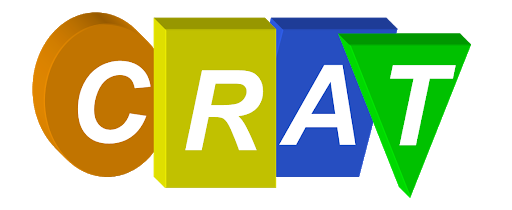Project full title: hOME Gigabit Access

European Union FP7
Grant agreement no.:213311
Duration: 36 months
Starting Date: 1-1-2008
Expected Ending: 31-12-2010
Websites
http://www.ict-omega.eu/
https://cordis.europa.eu/project/id/213311/it
Coordinator: France Telecom (France)
Consortium: CRAT (Italy), INSA-IETR (France), IHP Microelectronics (Germany), Infineon Germany AG (Germany), Thyia Technologies (Slovenia), Thomson R&D France (France), TomNets RWTH Aachen (Germany), Spidcom (France), Technikon (Austria), Telefonica I+D (Spain), Universität Dortmund (Germany), Universität Ilmenau (Germany), University Of Athens (Greece), University of Oxford (United Kingdom), Universita di Udine (Italy), Eurescom (Germany), Infineon Austria AG (Austria), Siemens AG (Germany), Fraunhofer (Germany)
Key Persons: Prof. Francesco Delli Priscoli, Dr. Vincenzo Suraci, Dr. Marco Castrucci, Dr. Antonio Pietrabissa, Ing. Gabriele Tamea, Ing. Guido Oddi
Project Description: Gigabit home access networks (HANs) are a pivotal technology to be developed if the EU Vision of the Future Internet is to be realised. Consumers will require such HANs to be simple to install, without any new wires, and easy enough to use so that information services running on the HAN will be “just another utility,” as, for instance, electricity, water and gas are today. A successful OMEGA project will demonstrate the successful realisation of a gigabit HAN.
The OMEGA HAN is centred round the needs of the user: gigabit RF and optical links, combined with more robust wide-area RF and visible-light communications will provide wireless connectivity within and the home and its surroundings. Combined with power-line communications this provides a home backbone “without new wires.” A technology-independent MAC layer will control this network and provide services as well as connectivity to any number of devices the user wishes to connect to it in any room in a house/apartment, and further, this MAC layer will allow the service to “follow the user” from device to device. In order to make this vision come true, substantial progress is required in the fields of optical-wireless and RF physical layers, in protocol design, and in systems architectures. For OMEGA, an interdisciplinary team from leading institutes and companies in this broad range of technologies has been assembled.
A successful project will have a number of significant outcomes. It will provide a substantial consumer “pull” for next-generation broadband by enabling the sharing of large-date user-generated content, which will, in turn, raise the expectation for higher data rates. Also, at the same time, a “push” from service providers will take place, as they see the possibility of delivering new high-bandwidth services to the user throughout the home. OMEGA, together with the next generation of broadband access, will present significant market opportunities for all the European actors in the communications industry, but most importantly empower citizens by offering access to novel “emotional” experiences or virtual services, while addressing ageing, isolation, and health challenges, and thus making an important contribution to the vision of FP7.
CRAT Contribution: CRAT will lead the design of the inter-MAC layer, identifying its architecture, its functionalities, the structure of its components, and their exposed interfaces. CRAT will also investigate the definition of a semantic language to be used within the signalling and management plane, and as a common ontology shared by all WPs. CRAT will contribute to the design of the inter-MAC protocol dealing with QoS, intelligent access control, scheduling, path selection, and security by use of an innovative approach derived from advanced control theories like robust control, game theory, and enforcement learning. The developed procedures and algorithms will be assessed by means of dedicated simulation tests in terms of reliability, efficiency, complexity, performances, and energy saving.
CRAT will lead the design of the Gigabit Home Network architecture, identifying the network components, their functionalities, and interfaces for each architectural plane, viz. management, signalling, and transport. The overall architecture will be improved recursively with a feedback approach taking into account incremental design improvements of the technology-independent inter-MAC layer and the technology-dependent MAC layers.
Relevant Publications:
[1] J.P. Javaudin, M. Bellec, D. Varoutas, V. Suraci, “OMEGA ICT project: Towards convergent Gigabit Home Networks”, IEEE PIMRC 2008 – Gigabit Home Access Special Session, Proceedings PIMRC08-1191.
[2] F. Delli Priscoli, V. Suraci, M. Castrucci, G. Tamea, “Inter-MAC: Convergence at MAC layer in Home Gigabit Network”, 17th ICT-Mobile Summit 2008 Stockholm, Sweden, 10 – 12 June 2008. Proceedings. #10.
[3] P. Jaffré, J.P. Javaudin, M. Castrucci, G. Tamea, C. Liberatore, M. Bahr, “Architecture Reference Model for Next Generation Home Networks”, 18th ICT-Mobile Summit 2009 Santander, Spain, June 2009. [4] M. Castrucci, G. Tamea, C. Liberatore, P. Jaffré, M. Bahr, “Functional analysis for Next Generation Home Networks”, 18th ICT-Mobile Summit 2009 Santander, Spain, June 2009.
[5] V. Suraci, D. Macone, G. Oddi, “Load Balancing Strategy in Heterogeneous Meshed Home Access Network”. Gigabit Home and In-Building Networks, Poster Paper. Published in: ICT-MobileSummit 2009 Conference Proceedings, IIMC International Information Management Corporation, 2009, ISBN: 978-1-905824-12-0. Paper #23.
[6] V. Suraci, G. Pongelli, “Convergence at Inter-MAC Layer: First Implementation Analysis”. Gigabit Home and In-Building Networks, Poster Paper. Published in: ICT-MobileSummit 2009 Conference Proceedings, IIMC International Information Management Corporation, 2009, ISBN: 978-1-905824-12-0. Paper #24.
